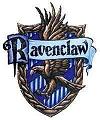"We have discovered how to hit the Jews where they are most
vulnerable. The Jews love life, so that is what we will take from
them. We will win because they love life and we love death."
--Hassan Nasrallah, Secretary General of Hezbollah
During the Bronze Age, human societies engaged in the cult of death. Evidence of this can be seen in the Vale of Hinnon (Ge-hinnon, the original vision of hell) near Jerusalem where archaeologists have uncovered jars and jars of the bones and ashes of children sacrificed to the idol Molach. The children were thrown alive into the fires within the mouth of a graven image of the idol in order to appease the god. Similar evidence has been found that is associated with civilizations practicing human sacrifice on a large scale throughout the world. The cult of death seems to be associated with a level of tool technology and the organization of society that is consistent with the Bronze Age. Thus, the Aztec rulers were engaged in human sacrifice at the time of first contact with the Spanish explorers, which was well into historical times for European civilization.
In these cults of death, the sacrifice of individuals was justified for the good of the people, their lands and crops, and carried out by a religious hierarchy that was wedded in some way to the political rulers, whether by actual intermarriage or by a fusing of the ruling family with godhood. The religions tended to be nature religions in which gods were thought to be in control of the various functions of nature (the sun, moon, rain and storms, crops, etc.) and were considered to be capricious and so needed to be placated by the spilling of human blood.
The Western Religions (Judaism, Christianity and Islam) all stem from the Israelite Religion, which also began as a nature religion that required human sacrifice. It is the evolution of this religion through monolatry (the worship of one god while acknowledging the existence of others) to a monotheism that developed the replacement of human sacrifices with animal sacrifices, and then with prayer and study, as an understanding of the unique nature and value of individual human life seemed to go together with the worship of a unique and individual deity. This development has resulted only recently in the value modern Westerners place on the individual human being as an individual with rights.
Although Islam is categorized by scholars as one of the Western Religions (because it, too, developed out of the ancient Israelite Religion), it does not share the same Western values with Christianity and Judaism. A little more than a century after the death of Islam's founder Mohammed, it got stuck or turned away (the term is in the eye of the beholder), from such a development, maintaining instead a culture that placed value not on the individual and his choices, but upon the society as a collective, its values dictated by its ruler-priests. The reasons given for this turning away are varied according to historians and scholars of religion, and include the nature of Islam's parent society, and internal and external conflicts during its spread. Islam had access to much of the Western Classical Canon at a time when Europe did not, and in fact transmitted that heritage back into European culture while, at the same time, turning away from it.
In Islam, as it was among the Bronze age Israelites-to-be, the rules do no apply equally to all, but are administered through certain individuals according tribe and family. The tribal and familial heads have standing and everyone else is subsumed in those identities. As the anthropologist Mary Douglas terms it, the society is "strong group", which means that human worth is judged through group identification, rather than through individual character. This means that some lives are worth more than others, and that those whose lives are worth less than others may be sacrificed, sometimes even capriciously, with little remorse on the part of the killers for the lives taken. This means that it can be perceived as an honor to allow others to use one's life and death for their own purposes, so long as those purposes are referenced to the needs of the group. This is how Islamists can claim that they represent "the religion of peace" while condoning barbaric practices such as the stoning of women, or suicide bombings, or the ritual sacrifice of children. Their judgment of what is peace is made according to the impact on the group, and in these cases, only the group they value, and not the impact on the individuals who have been sacrificed to the perceived needs of that group. (This is a pattern shared with other collectivist cultures and sub-cultures whether they are religious or not).
A week ago Shabbat, the nature of the Islamist Death Cult was on display again as two terrorists invaded the home of an Israeli family, murdering the father, his three-month old baby daughter, and two sons while they slept. The mother was also murdered as she tried to fight them. The children were murdered in a manner consistent with the ancient cults of human sacrifices, the perfect knife slashed their throats in one stroke. The attack was a terrorist attack by definition, since these people were killed in an attempt to terrify others in the name of the political/religious goals of the Islamists. But even more ominous, the ritual nature of the sacrifice demonstrates the allegiance of the killers to the ancient and barbaric death cult.
There are those who will put themselves through all kinds of mental gymnastics in order to either justify the actions of these terrorists or to portray them as confused men who did not act on their own volition, but were used by unnamed "third parties". One such apologist commenting on my Facebook account even tried to argue that "nobody wants to harm others."
This is at its sorry best, wishful thinking, and at its worst, an injustice to the innocent victims of murder plain and simple.
Those who justify murder and child sacrifice often do so in order to maintain their fantasy that all ideas and cultures are equally good, and that one cannot be preferred over another. This is the concept of multiculturalism. Multiculturalism was the justification that hid behind the robes of the judge in New Jersey who thought it was just fine for a Muslim man to rape his wife in America because our laws should not override the husband's religious beliefs. Although this decision was overturned by a higher court, a sign that neither logic or righteousness are totally absent from American jurisprudence, most commentators still thought of this as a case of 'religious freedom' gone too far. Almost no one was able to articulate the principle that makes the original decision wrong. (Hint: It's Individual Rights).
It is clear that the Islamists' death cult is an example of Thanatophilia--a love of death over life--they have said so, and very clearly. If the Nasrallah quote above is not enough, here is one from the Albanian Islamist leader, Ali Benhadjj, who said:
"Faith is propagated by counting up deaths every day; by adding up massacres and charnel-houses." (Cited in Anna Griefman's Death Orders: The Vanguard of Modern Terrorism in Communist Russia).
What may not be so clear is that those who would make themselves apologists for such murders are also bowing down at the shrine of the death cult, and are worshiping at the idol of death, destroyer of worlds. To make moral equivalence between a three-month old baby in Itamar and her murderer, or between a four year old child running from the terrorists' guns in Beslan and his killers, is an exercise in the destruction of the difference between good and evil, and between evil and innocence. It is itself an indication about how far from Western values some westerners have strayed, and how willing they are to bow to the death-dealers, and have become themselves worshipers of death, the real haters of the human race.
Despite the peddlers of moral equivalence and multiculturalism, there are large differences between murder of the innocent, and the defense of one's own life and its value; there are large differences between a culture that values death over life, and one that values life over death, and values will ultimately determine how we make the judgment between them. While members of Hamas and Hezbollah were passing out candy and urging Islamists to celebrate the sacrifice of innocent children to the cult of death, their grandfather, speaking at their funeral was reminding his people of the commandment at the heart of the cult of life:
See, I place before you this day life and death, the blessing and the curse. Choose life, that you and your children may live. (My translation).
In accordance with this commandment, with the value placed on life, indiscriminate murder is forbidden. And so the grandfather and rabbi pleaded for justice through law and sound judgment, and pleaded against indiscriminate revenge.
There can be no justice at all in a society that bows down to the idols of death and destruction on principle. There, one will always witness the "religion of peace" unselfconsciously stoning women, sending young men off to death and murder by suicide attack, and ritually murdering innocent children. A society that worships at the altar of death is likely to see the massive deaths of themselves and their own innocent children. This is more than terrorism for political purposes, it is the love of death for its own sake. It is the cult of death.
Those who love life will act on that value. They will defend the innocent and will not traffic in the moral equivalency between the murderer and the murdered, and they will not allow their own judgment to be clouded by moral relativism, but will stand up for the rights of the innocent, and justice for their undeserved murders.






















